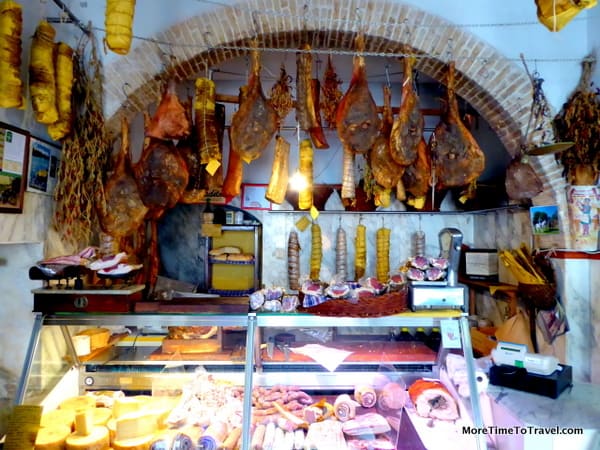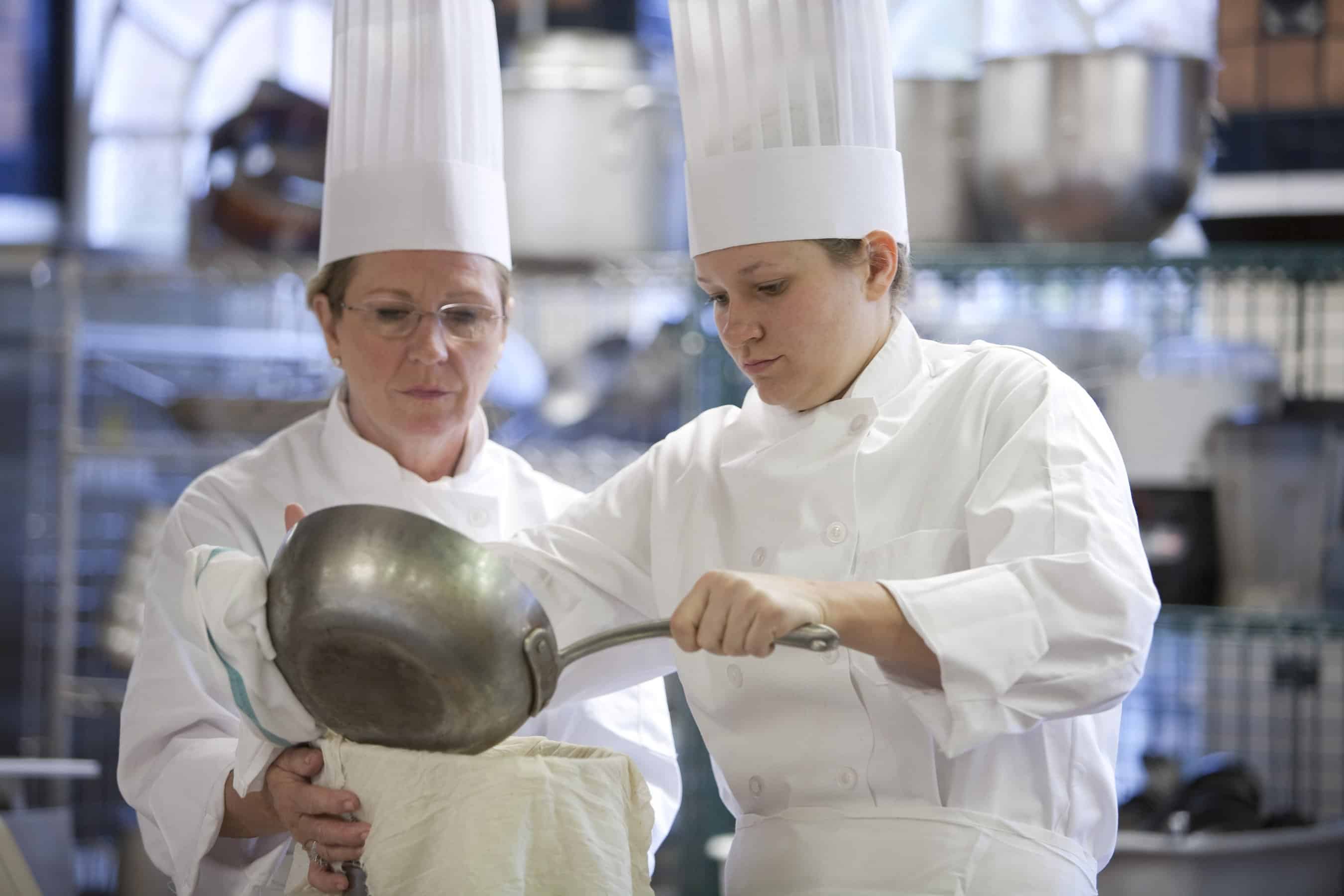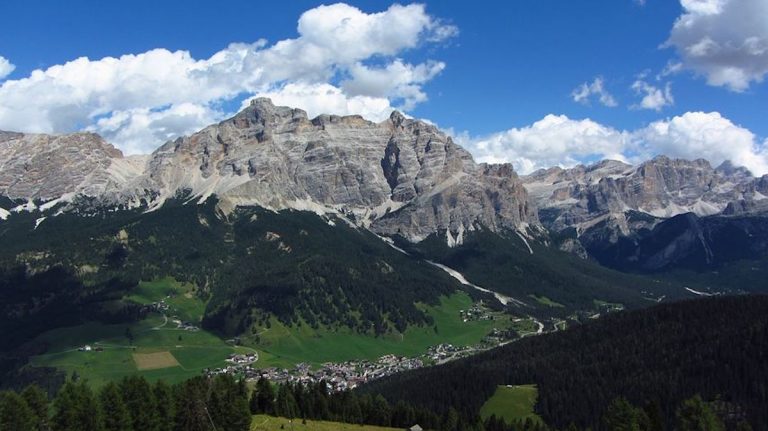Tasting Umbria: The delectable foods of a less-traveled region

Less-traveled Umbria will delight the taste buds of any foodie.
Most tourists are lured to Umbria by the region’s well-preserved medieval hill towns — rich in art, architecture, and spiritual and archaeological treasures — or its picturesque countryside with dense mountains and rolling valleys. But for those who travel in search of their next great meal, Umbria proffers a hidden gem: its unpretentious, often unheralded, cuisine.
Located in central Italy about 90 minutes from Rome, Umbria sits due east — or you might say in the shadow of — neighboring Tuscany, a region almost three times its size, whose food, wines and lifestyle have been romanticized in novels and feature films. Yet, many Umbrian recipes overlap with those of both Lazio (with its capital city of Rome) and Tuscany. Thus, visitors to Umbria are often surprised to find high-quality foods and wines that are far more moderately priced than in neighboring regions.
Our first stop was in Orvieto, a town (in the province of Terni) whose name is synonymous with the wine associated with the area for more than 2,500 years. We signed up for a cooking class with Chef Lorenzo Polegri, owner of Zeppelin, a restaurant in the town’s historic center. After washing up and donning aprons, we found ourselves working side-by-side in the kitchen with the latest crop of culinary student interns from the U.S. and Puerto Rico. Our experience, part hands-on and part didactic, took place while we tasted, sipped and conversed with the chef and his disciples.

Chef Lorenzo described five classic sauces, all relatively inexpensive and easy to prepare: pomodoro (classical tomato sauce); spicy arrabbiata (made with chili peppers); puttanesca (made with olives); carbonara (made with eggs, bacon and cheese), and amatriciana, made with tomato, guanciale (cured pork cheek) and pecorino. For our lunch, we enjoyed umbricelli alla amatriciana paired with a full-bodied Montefalco Rosso DOC wine.

The next morning, we met Marco Bellanca of ToursByLocals.com (a company that pairs travelers with local guides) for a wine and culinary tour of the countryside. Our meeting point was a parking lot at the modern EMI supermarket in Todi (a town in Perugia) about an hour from Orvieto. In our rental car, we followed him along the scenic wine trails of Montefalco and Bevagna.
Truffles are another regional specialty that draws food enthusiasts from around the world. Both aromatic black and summer black truffles grow wild in the forests of the Apennine forests (near oak, hornbeam and hazelnut trees) and prized white truffles are found in the valleys of Gubbio, Citta di Castello and Fabro. The last hosts a national truffle fair every November.
Marco then took us to a butcher shop in the ancient town of Bevagna, a virtual museum of meat owned by Marco Biagetti and Rosita Cariani. The couple joked that the third-generation butcher married his wife, a fourth-generation butcher, to eliminate competition.



 We feasted on slices of mouth-watering salumi (cured meats), porchetta (moist pork roast stuffed with herbs traditionally cooked over wood), and Prosciutto di Norcia (ham with a distinctive flavor derived from pigs that feed on acorns and chestnuts). The town of Norcia, one hour to the east, is considered the birthplace of modern charcuterie and pork butchering techniques.
We feasted on slices of mouth-watering salumi (cured meats), porchetta (moist pork roast stuffed with herbs traditionally cooked over wood), and Prosciutto di Norcia (ham with a distinctive flavor derived from pigs that feed on acorns and chestnuts). The town of Norcia, one hour to the east, is considered the birthplace of modern charcuterie and pork butchering techniques.
We ended our day at a family-owned winery, Cantina Dionigi, where we met its fourth-generation winemaker, Roberto Dionigi. We sampled local dishes prepared by his wife and paired with the family’s wines: bruschetta with fresh tomatoes (with Grechetto white wine); crunchy, cold farro salad with cheese, tomato, basil and pine nuts (with Montefalco Rosso); porchetta (with Montefalco Sagrantino); and tozzetti biscotti (with Montefalco Sagrantino Passito), an exquisite sweet red that is one of the region’s two DOCG wines (the highest classification for Italian wines).

With people as humble and welcoming as its cuisine, this “taste” of Umbria left us eager to return to explore more of its lively markets, specialty food shops, rustic restaurants and seasonal festivals.
IF YOU GO
- Umbria Tourism
- Orvieto Tourism
- Cooking classes with Chef Lorenzo Polegri
- ToursByLocals.com
“Tasting Umbria: Following the food in a less-traveled Italian region” by Irene S. Levine was published by the Chicago Tribune online on January 27, in the Chicago Tribune Sunday Travel section, and in the Sun-Sentinel (South Florida).






The food looks amazing!!
What an informative article. I enjoyed your descriptions, photos and attention to detail. This is one fact I won’t forget – Umbria = seven million trees yielding five varieties of olives. Perfect for dinner party chatting:)
I thought the number was staggering!
I’m reading this before breakfast – and you’ve made me even more hungry! I love Italy, but have never visited Umbria region before. Thanks for tempting me, both with the scenery and gastronomy.
It’s a wonderful region that doesn’t get the attention it deserves!
Your first photo of the Umbrian countryside is so picturesque and it’s easy to imagine that the area has always looked like that – a sense that time has passed this region by. The sense of timelessness continues with your profiles of the 3rd and 4th generation butchers, winemakers and producers of olive oil and their stories must have been fascinating. I can’t wait to drive through Italy’s countryside and visit Umbria for myself!
So glad you liked that particular picture. It almost looked like a painting to me and really reflects the beauty of the Umbrian hills.
Your post really makes me want to revisit Umbria, and I would love to take a cooking class. There are so many places to see in the world, but Umbria exceeded my expectations and I would love to revisit.
I seem to never tire of Italy:-)
Wow, what a delicious food tour of the region, I love Umbria and Orvieto is so beautiful and easy to get to from Roma.
Yes, we did the drive from Rome to Orvieto….a piece of cake:-)
We\’d really like to explore more of Italy (and its food!). We\’ve only really visited Rome, Florence and Venice! Umbria looks like a great food region – it would be lovely to eat our way through it. (Linguine carbonara here we come!) Thanks for tempting us…
Each of Italy’s regions are so different with so much to offer but pasta seems to unify the country!
I am not a fan of culinary snails, but I would definitely like to eat those snail-shaped rolls. They look yummy. And oh, the bruchetta!
They tasted as good as they look!
Everything looks absolutely scrumptious! I think it would be most fun to visit a less-traveled region of Italy such as Umbria. Can’t believe we haven’t made it there yet!
I think you would love it!
Like Rebecca above, I’m reading this before breakfast. Big mistake. I’ve been to Umbria several times but as you say, for the lovely hilltop villages. I (hanging my head in shame) admit I haven’t really tried to explore the food, which is clearly a mistake. Prosciutto… truffles… and oh, the sauces!! Umbria is about a day’s drive from me so there’s no reason not to revisit – perhaps a foodie trip is what I need next to wipe away the central European rainy blues!
I wish Umbria was a day’s drive from me:-)
I definitely should not have read this delicious article before lunch. What a mistake. I know nothing in the frig is going to compare to the feast you’ve shared with us from Umbria. Yet another tasty region of Italy to explore!